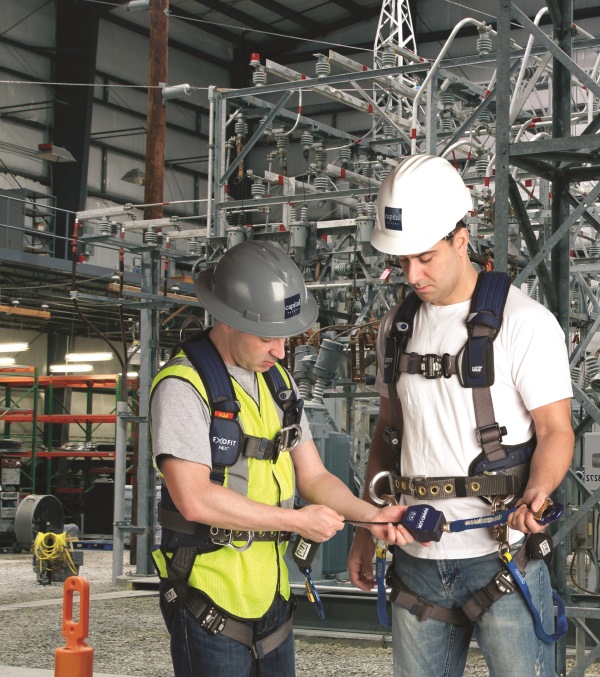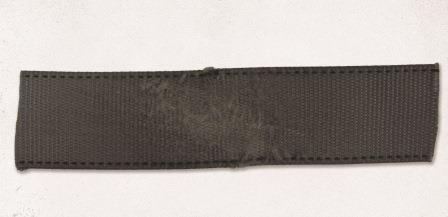Fall protection continues to be a focus across every industry where workers are performing tasks at height. The Occupational Safety and Health Administration (OSHA) shined a spotlight on the issue during the summer months with its National Safety Stand-Down and focus on fall protection safety. And individual companies, such as Capital Safety, have launched training and safety programs to drive and support on-site training and compliance sessions.
Raising awareness through these special initiatives is important, but the safety message should have a daily cadence on jobsites. There is too much at stake for fall protection safety not to be a priority. Falls represent one of the leading causes of workplace fatalities and injuries. Falls also cost employers billions of dollars in lost time, workers’ compensation, and third-party liability suits. So the message on jobsites — with workers, with safety managers, with employers — is simple: Safety pays and falls cost.
Before You Start, Inspect
 There are several components to creating a comprehensive fall protection program to help make compliance simple and to create an environment of safety on a jobsite. But any program needs to begin with a thorough inspection of fall protection equipment before each use. All personal fall arrest equipment must be properly maintained and serviced to ensure maximum worker safety. To do that, it must be inspected and the results documented. Additionally, regular inspection by a competent person for wear on the equipment should be performed at least annually.
There are several components to creating a comprehensive fall protection program to help make compliance simple and to create an environment of safety on a jobsite. But any program needs to begin with a thorough inspection of fall protection equipment before each use. All personal fall arrest equipment must be properly maintained and serviced to ensure maximum worker safety. To do that, it must be inspected and the results documented. Additionally, regular inspection by a competent person for wear on the equipment should be performed at least annually.
- Full Body Harness: The hardware, webbing, stitching, and labels of the full body harness must be inspected to ensure that if there is ever a fall, the harness is going to work. When examining buckles, D-rings, back pad, and loop keepers, check to see if any are damaged, broken, or distorted. Additionally, all hardware must be free of sharp edges, burrs, and cracks and cannot have any worn parts or corrosion. All webbing materials must not have any frays, cuts, or broken fibers, and all stitching must be checked for pulls or cuts. Broken stitches may be an indication that the harness has been impact loaded and must be removed from service. The final component to inspecting a full body harness is to make sure all labels are present and fully legible.
- Lanyards: Several steps are used to examine the different types of lanyards used in a fall protection system. The webbing and stitching must not have any frays, cuts, or broken fibers. It is also important to check for any tears, abrasions, burns, or discolorations on the webbing, and you should make sure that it is free of knots and chemical or heat damage. All stitching should be checked for pulls or cuts as well. If any of these are discovered, it could reduce webbing strength and the lanyard should be taken out of service immediately. If synthetic rope is part of the system, check for concentrated wear including frayed strands, broken yarns, and burns. Also, inspect all rope splices and ensure they are tight, utilizing at least five full tucks. Thimbles must be held by the splice. If workers on a jobsite are using an energy absorbing lanyard, additional steps must be taken to ensure the energy absorbing component has not been activated and is safe to use. There should be no evidence of elongation, and the energy absorber cover must be secure with no tears or damage.
- Snap Hooks and Carabiners: This hardware securely connects the worker to his or her personal fall protection system and needs to be in good working condition. Carefully inspect all snap hooks and carabiners for damage. Check for worn or broken parts, cracks, sharp edges, burrs, or other deformities. It is imperative that a worker ensures the gate and lock operate smoothly with no difficulty. Also, gates must fully close and engage the nose of the hook.
- Self-Retracting Lifelines: There is a set of review guidelines for all self-retracting lifelines (SRL) that should be followed. The lifeline should pull out and retract fully without hesitation or creation of a slack line condition. You must also ensure the device locks up when the lifeline is pulled sharply. During the examination, lockup should be positive with no slippage. Inspecting the lifeline for any cuts, burns, chemical damage, or severely abraded areas is a must — there can be no damage to the lifeline whatsoever or its integrity will be compromised. Wire rope and synthetic rope models must also be checked for any issues, including cuts, kinks, concentrated wear, frayed strands, or broken yarns. The SRL hardware should be inspected as well. Look for any corrosion, loose screws, cracks, and bent or damaged parts to the housing, and you should ensure the anchorage point is not damaged or distorted. Damage to connecting hooks or carabiners must be identified and evaluated as well. Any distortion, corrosion, or parts in poor working condition make hardware unsafe and the SRL should be removed from service.
Keeping Equipment Logs
 Upon final inspection of each component, workers should record their results and the date in an inspection log.
Upon final inspection of each component, workers should record their results and the date in an inspection log.
A successful fall protection program must be built on the foundation of safe equipment. Properly functioning fall protection equipment is vital for every person who works at height. Pay attention to its condition. Replace any component that looks damaged. And be sure to stay up to date on all training courses. Your company’s competent person should be able to advise you throughout the process.
If you are diligent in inspecting the fall protection, keeping it clean, and storing it properly, it should keep you safe and not let you down.
About the Author
Jim Hutter has been a full time trainer at Capital Safety since 2002. In his tenure, he has issued over 8,500 training certificates for Fall Protection, Rescue at Heights, and Confined Space. Hutter has authored over 100 articles for a variety of publications and is a known speaker at national trade shows. His career includes 23 years of fire service experience for one of the largest cities in Minnesota where he served as Captain of the Special Rescue Unit. His background allows him to couple his high energy training style with actual real world experiences. Hutter delivers training for Capital Safety/DBI-SALA worldwide for the Oil & Gas, Wind Energy, Transportation, Construction, Utilities, and Mining industries. For more information, contact: Capital Safety, (800) 328-6146, www.capitalsafety.com